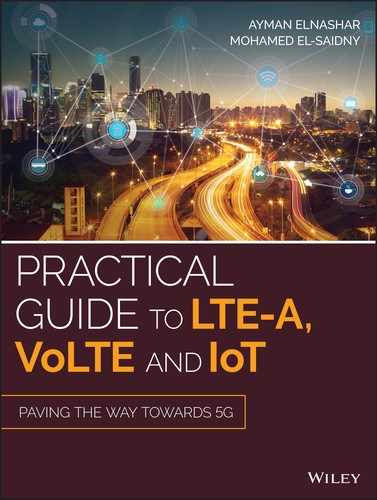Book Description
Essential reference providing best practice of LTE-A, VoLTE, and IoT Design/deployment/Performance and evolution towards 5G
This book is a practical guide to the design, deployment, and performance of LTE-A, VoLTE/IMS and IoT. A comprehensive practical performance analysis for VoLTE is conducted based on field measurement results from live LTE networks. Also, it provides a comprehensive introduction to IoT and 5G evolutions. Practical aspects and best practice of LTE-A/IMS/VoLTE/IoT are presented. Practical aspects of LTE-Advanced features are presented. In addition, LTE/LTE-A network capacity dimensioning and analysis are demonstrated based on live LTE/LTE-A networks KPIs. A comprehensive foundation for 5G technologies is provided including massive MIMO, eMBB, URLLC, mMTC, NGCN and network slicing, cloudification, virtualization and SDN.
Practical Guide to LTE-A, VoLTE and IoT: Paving the Way Towards 5G can be used as a practical comprehensive guide for best practices in LTE/LTE-A/VoLTE/IoT design, deployment, performance analysis and network architecture and dimensioning. It offers tutorial introduction on LTE-A/IoT/5G networks, enabling the reader to use this advanced book without the need to refer to more introductory texts.
- Offers a complete overview of LTE and LTE-A, IMS, VoLTE and IoT and 5G
- Introduces readers to IP Multimedia Subsystems (IMS)Performs a comprehensive evaluation of VoLTE/CSFB
- Provides LTE/LTE-A network capacity and dimensioning
- Examines IoT and 5G evolutions towards a super connected world
- Introduce 3GPP NB-IoT evolution for low power wide area (LPWA) network
- Provide a comprehensive introduction for 5G evolution including eMBB, URLLC, mMTC, network slicing, cloudification, virtualization, SDN and orchestration
Practical Guide to LTE-A, VoLTE and IoT will appeal to all deployment and service engineers, network designers, and planning and optimization engineers working in mobile communications. Also, it is a practical guide for R&D and standardization experts to evolve the LTE/LTE-A, VoLTE and IoT towards 5G evolution.
